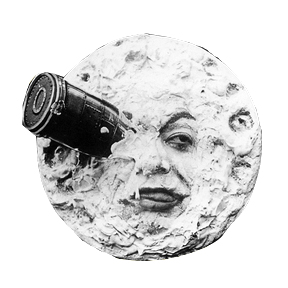
|

|
A Trip to the Moon, 1902
Le Voyage Dans La Lune, A Trip to the Moon, was a silent French film from 1902. The film was considered significant because it was the first successful science-fiction film, as well as the first popular narrative film. It was considered the most complex film of its time. The film showed technological advances such as frame by frame optical illusions, dissolves, double exposures, filming small-scale to give the illusion of large scale, and the use of scenes to tell a story occurring in multiple locations. Georges Méliès, the creator of A Trip to the Moon was first inspired when he saw the cinématograph by the Lumière brothers'. Méliès built Europe's first film studio in Montreuil, France. He was known for constructing large, elaborate fantastical sets for his short films that would later help sculpt the work for A Trip to the Moon. Below is a link to watch Méliès A trip to the Moon. Also provided are two other examples of early motion pictures. The Great Train Robbery (1903), by Edwin S. Porter is considered significant because during production the camera was not fixed, it moved with the action. In 1905 Cecil Hepworth released the film Rescued by Rover in Britain. The film is another example of popular early cinema. So popular, the film was printed over 400 times, causing to break the films strips twice, requiring Hepworth to re-shoot the film.
|

|